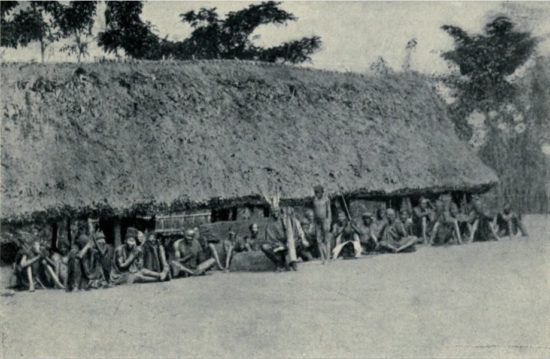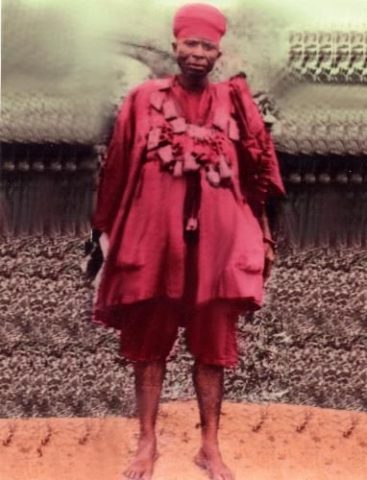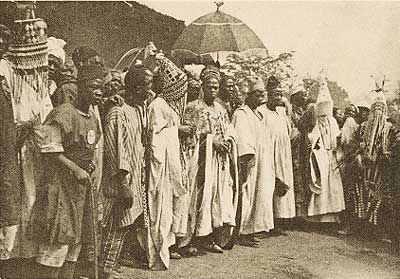The Owu – Ijebu War & The Owu Lost Children | Yoruba History

The Owu homestead was Dariagbon, next to Sifirin in Osun State, 15 miles from the modern Oyo while their capital was Owu Ogbere when the Owu-Ijebu war occurred.
The battle lasted for at least four years, where thousands of people were killed, and hundreds of thousands of Owu people were displaced.
The remain of the Owu walls was over twenty feet high, which shows how defensive the Owu communities must have been before the war.
The present-day governor’s house at Agodi was built across Owu walls. Owu Ipole, which was where the Owu had settled before they moved to Owu Ogbere, is in Ayedaade local government area.
Historians like Mabogunje & Omer Cooper had argued that the Owus usually attack slave wagons, setting slaves free, in Apomu, which the Ijebus are not pleased about.
They further revealed that the pressure on Lagos’s demand for slaves from the Ijebus had caused kidnapping in the local area, which affected the Owus directly as Owus spread across a broad region.
Other historians have argued that the Owus had killed Ijebu traders, destroying their slave wagons leading to the war, on a pretense of discussing over bunches of alligator peppers.
What escalated to the war was the slave-raiding which the Owus had objected to since the late 17th century.
What we are sure of is, slave trade played a significant role in how the war started, and the Ijebus were the leading suppliers of slaves to Lagos.
During Alaafin Abiodun’s reign, he had asked the Owus in 1789 to prevent Oyo traders’ from been kidnapped in the Apomu market; this suggests that the abduction of people or slaves raiding in Yoruba Land had been existing before the Owu-Ijebu war between 1817 – 1821.
The Owu-Oyo relationship went further than providing securities to the Oyo Ile, Alaafin Abiodun is also married to one of Olowu’s daughters. Owu kingdom had been collecting tributes from Ajaka, Alaafin, after Oranmiyan, and Oyo-Ile was under Owus protection.
The Owu – Ijebu War & The Owu Lost Children | Yoruba History
Sango took over the power from his brother, Ajaka, due to his gentle way of handling things. He was equally a warrior and a herbalist and regularly showed off his supernatural powers by calling down lightning.
The first thing Sango did as the Alaafin of Oyo was to stop giving Owu their tributes. He removed all Owu army bases all around Oyo, making Oyo an independent kingdom, and creating Oyo Army.
But during Alaafin Abiodun’s years in power, the Oyo Army had declined, and the Owus regularly provide securities to Oyo-Ile.
On the other hand, The Ijebus are an influential Yoruba group. Their settlement is the biggest in Yoruba Land and became principal suppliers of slaves to Lagos in the early 18th century. They pass through Apomu while transporting slaves in captive to Lagos.
The settlement of the Owu at Owu Ogbere made them victims of slave raiding, which made the Owus attack and killed several Ijebu traders at the Apomu market.
The Ijebu people reinforced, camped at the farm not far from the Osun river. The Owu people immediately attacked the Ijebus; they heard of their approach but met fierce resistance as the Ijebus were now better armed.
Ijebus, armed with the European weapons, attacked the Owu people, with Ife’s help, and defeated the Owus, destroying their community.
The Ijebus was attacked the second time, causing havoc on the Owu’s army.
The third time, the Ijebus attacked the Owu people with help from the Ifes. But at this time, the Owus have moved out of dariagbon, where the majority of the Owus were concentrated.
The impact the Owus had in Yoruba Land was significant; the Owus claimed to be descendant of Obatala and left Ile-Ife before Oduduwa was recognized as the Ife leader. The Anlugbua chains (Owu deity) is featured everywhere the Owus are settled.
It can be argued that the Owu civilization started before the Oduduwa conquest and before any kingdoms in Yoruba-Land.
Meanwhile, after Ijebu won their war against the Owus, the Oyo warriors attacked the homeless Owu refugees at Erunmu.
The attack, which happened in 1833, was led by Kurunmi.
During the attack, notable warriors that had formed an allegiance with the Owus like Degesin, Oginni, and Maye Okunade were killed.
But the Oyo forces couldn’t penetrate the Owu wall, which the Owus had built immediately; they became a homeless refugee to protect themselves against any external attack.
The Oyo forces resorted to cutting supply for the Owu people. They laid siege at the Owu farms and markets, forcing the Owus to eat what other Yoruba town described as “disgusting” to survive.
Owu people captured during the war were sold to the Atlantic slave trade and transported on the Manuelita Spanish slave ship.
Owu settlement at Owu Ogbere was their last homestead before some headed to Abeokuta, Benin Republic.
The Owu people were scattered all over the South West region of Nigeria.
Orita Basorun in Ibadan was the previous Owu camp and is still called Anulgbua till today.










